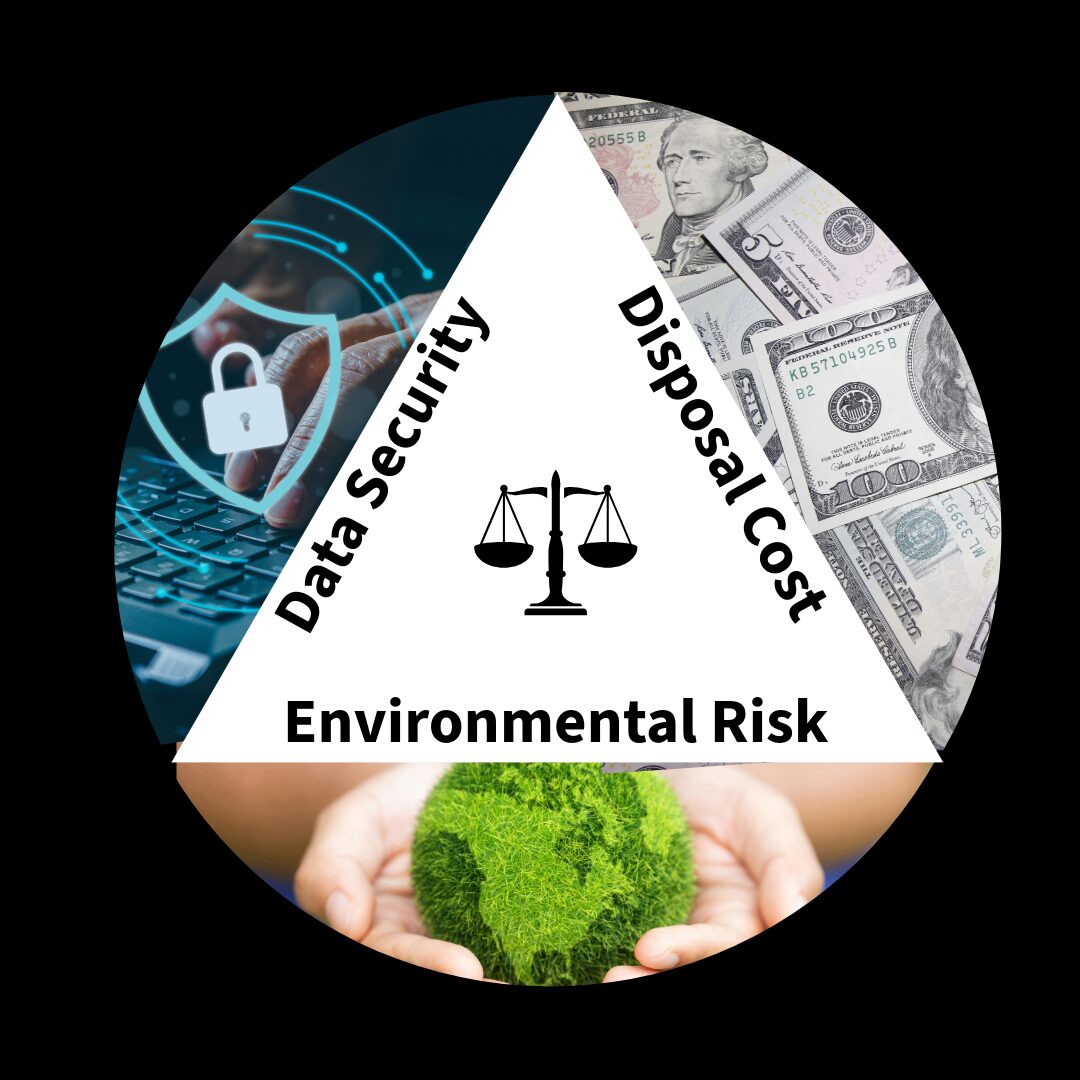NIST 800-88 Guidelines for Secure Data Destruction
In today’s data-driven world, where information is both currency and vulnerability, ensuring secure data destruction is paramount. A company will inevitably have computers and data drives that have reached the end of their useful life, but adopting robust standards for data destruction is essential if your company handles sensitive data that you would not want to fall into the wrong hands. Enter NIST 800-88, a set of guidelines for media sanitization based on determining the best methods for data sanitization or destruction after classifying the data into clear, purge, or destroy categories. Established by the National Institute of Standards and Technology (NIST) the NIST 800-88 guidelines provide standards to guide companies in choosing the best method of destruction for each classification.
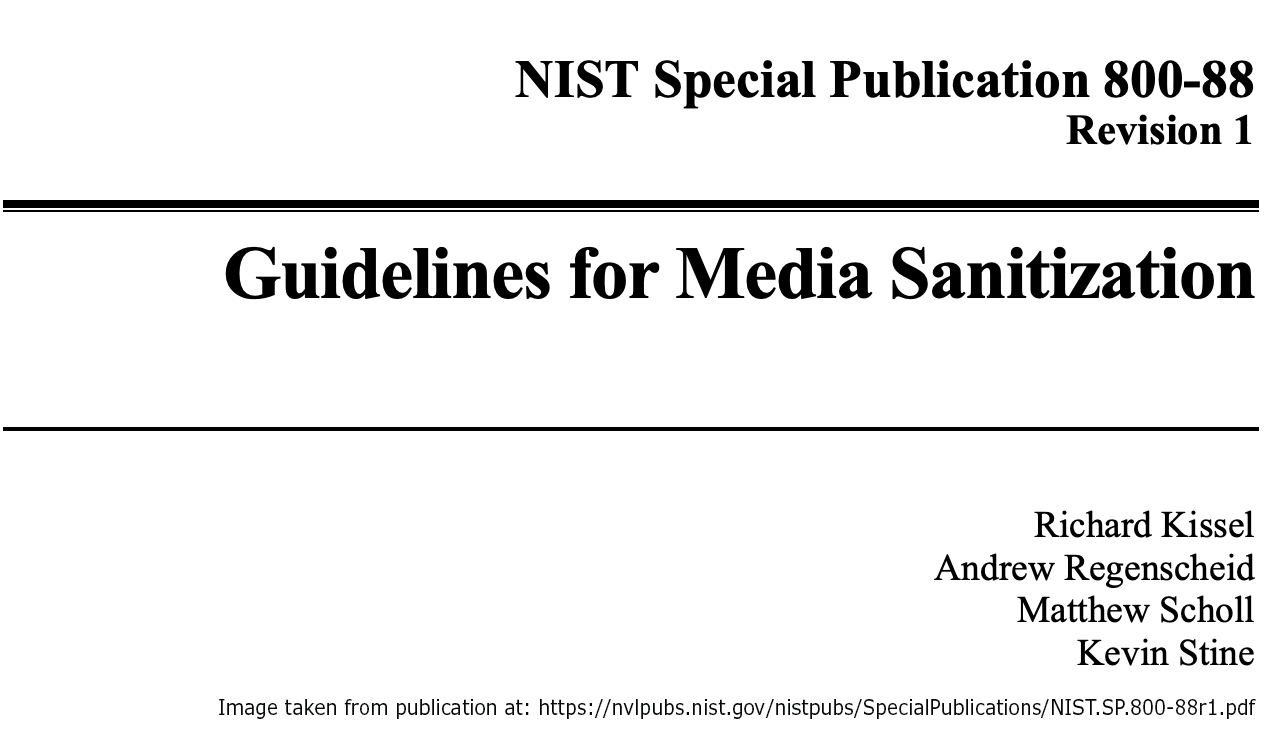
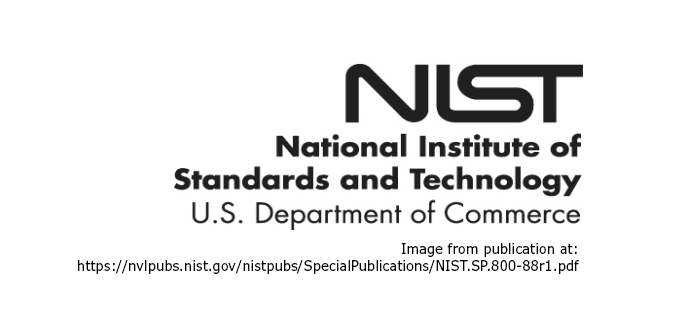
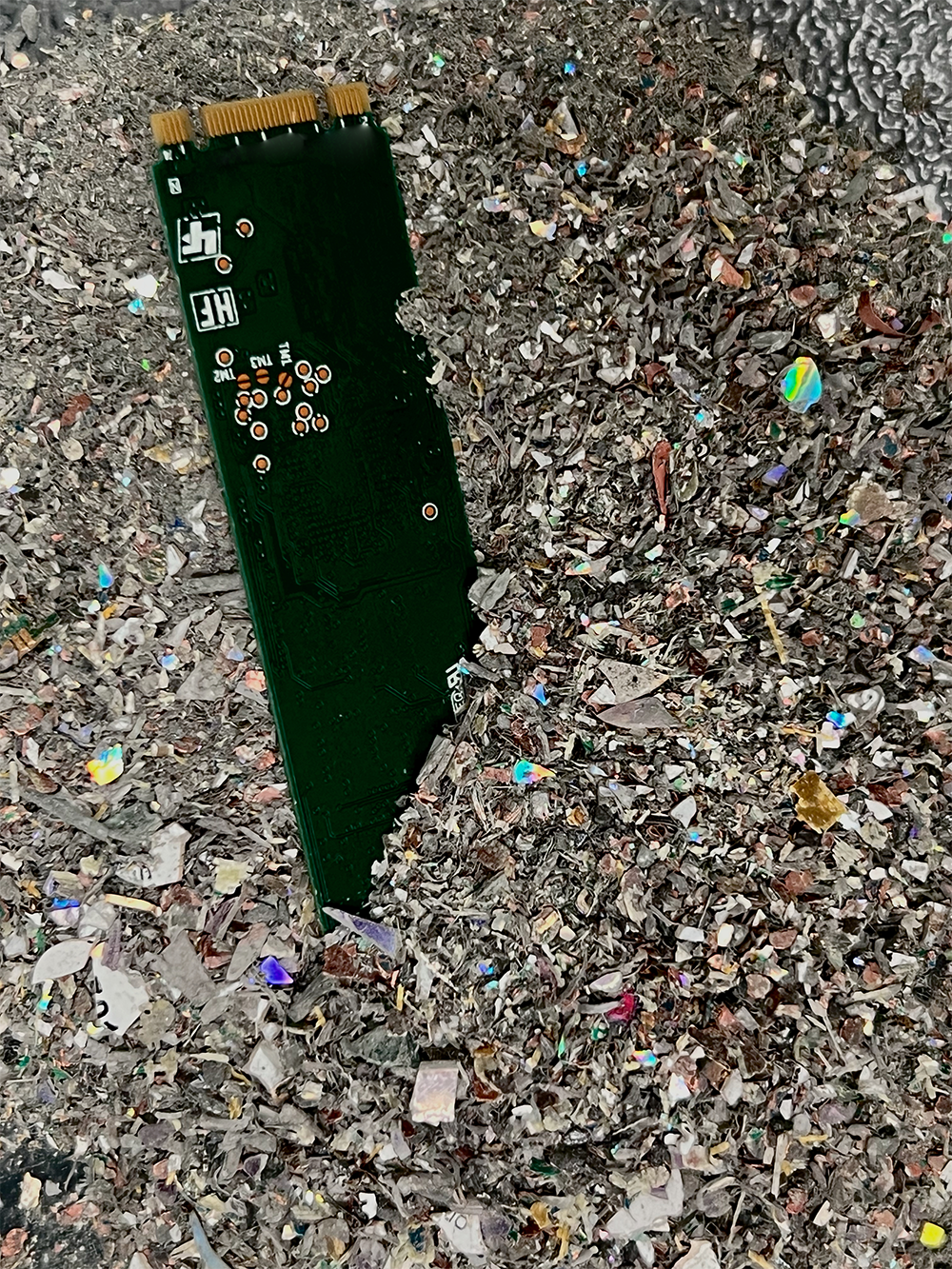
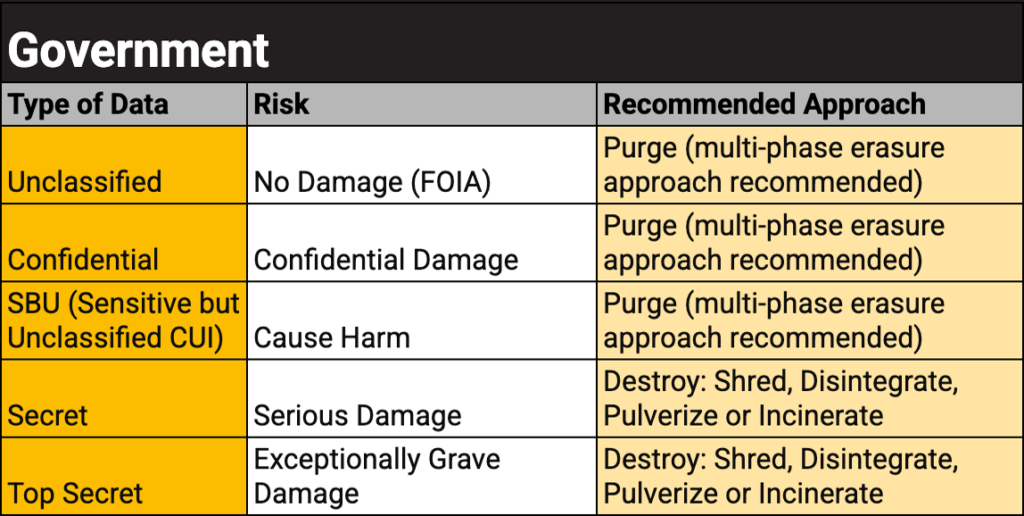
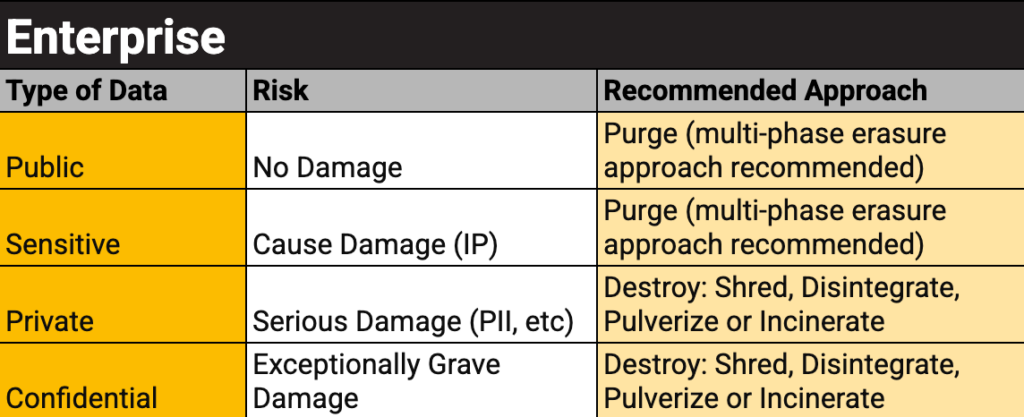 *These are common customer examples based on our experience. Your CISO (Chief Information Security Officer) should approve the data sanitization or destruction method.
*These are common customer examples based on our experience. Your CISO (Chief Information Security Officer) should approve the data sanitization or destruction method.